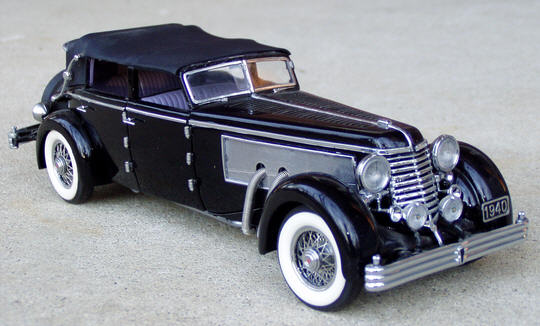|
||||||||||||||
|
This Duesenberg is "The Last Duesenberg" -- it was commissioned by Bauer, a German artist, using a 1937 engine/chassis. However, it was not finished and titled until 1940. Remarkably, it remains unrestored and original to this day. It recently sold at auction for $2,805,000 (after buyer's fees)! The new owner, only the fourth since new, is John O'Quinn a Houston lawyer. He plans to open an auto museum in the Houston area to display his collection of about 800 cars, including (I hope!) SJ397! The Franklin Mint crafted a very nice 1/24 scale diecast model of this car. I have a copy in My Collection. Some excellent pictures of SJ397 at the auction can be found here. |
|
The reports of history of the car is a little confused. Elbert
gives the chassis as 2405, a LWB chassis, with an owner mounted body
and supercharger. Adler's book gives the chassis as 2563, but in the
list by chassis number, that chassis is assigned to J530! Elbert
also associates chassis 2563 with J530. I will agree with
Elbert and more recent accounts -- chassis 2405. |
|
The car is referred to as a 1937, 1938, or 1940 (the year that the present car was finished and titled), depending upon whom you ask! |
|
|

